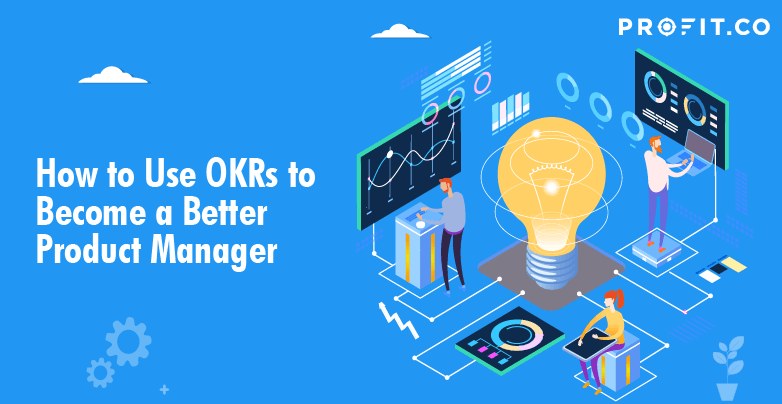If you’re a product manager, congratulations! You fulfil one of the most valuable but often misunderstood roles at your company.
As one of the pilots in the cockpit steering your company towards success, you get to define what success looks like. You’re lucky because your team’s objectives and your organization’s objectives or company OKRs are closely aligned.
At the same time, you’re under a lot of pressure to keep different teams focused on the central goal: maximizing value for your customers. This, in turn, translates into maximizing value for your company.
Most people spend more time and energy going around problems than in trying to solve them.
But how can you define success if you aren’t able to articulate what success looks like for your business?
If you are facing any of these problems, then you might not be setting OKRs effectively:
- Your teams struggle with prioritizing different strategies and managing timelines
- Your teams aren’t moving in the same direction, creating conflicts and inefficiency
- You are feeling ineffective and off-balance, like your progress is stuck in place
What Do OKRs Mean For Product Management?
OKRs are the defined priority goals that keep everyone within an organization focused on what truly matters. A strategically aligned vision leads to a shared sense of purpose.
As a product manager, it’s your job to turn that collective focus into the passion that inspires everyone on your team.
OKRs help you answer two of the most important questions for any organization.
- Where do we want to go?
- How do we know we’re getting there?
Remember, OKRs are not only there to document tasks.
They exist to energize and motivate. They should be ambitious and give your teams a target to aim for. Keeping track of your OKRs forces you to continually reinforce your goals in the context of your shared ambition.
What is the best way to keep track of your important OKRs? While some teams try to use spreadsheets for OKRs, they are not scalable or agile enough to truly benefit your organization. Instead, you should use an intuitive OKR management software such as Profit.co to help you focus, measure, and achieve your goals. You can get started on Profit.co today completely free of charge!
Key Benefits of Applying OKRs in Product Management
If you set appropriate OKRs, they’ll offer immense benefit for your entire organization. Here are two key benefits:
- They teach teams to be result-oriented.
- Reviewing OKRs gives you regular opportunities for reinforcing direction and focus.
By identifying the key results that you are targeting, your entire team is on the same page. They know exactly what to do and whether they have achieved their goals by the end of each cycle.
While focusing on process is important, clearly setting out the desired results ahead of time ensures that no one spends time on solving issues that are not on the priority list.
Setting OKRs also gives you an excellent opportunity to review your team’s achievements at the end of each quarter. This is a reasonable amount of time to see what works and what doesn’t. In addition, it helps you stay on track and decide what direction to pivot towards.
The Dos and Don’ts of Product Management OKRs
When setting effective OKRs, be ambitious and specific.
Here’s an ineffective objective: “Grow revenue over the next few months.” It’s too general and doesn’t point towards an inspiring target.
Instead, set a more inspiring, specific, time-bound goal: “Achieve record 2nd quarter revenue growth.”
When it comes to defining key results, make sure that they are quantifiable and lead to objective grading.
An ineffective key result might be: “Improve customer acquisition.”
Instead, aim for quantifiable, specific results: “Onboard 250 new clients in the 3rd quarter, and reduce customer loss by 10%.”
Remember not to take on too many OKRs at once. You should focus on 3-5 OKRs in each quarter. For each objective, you should have between 3-5 key results. Having too many OKRs can lead to unbalanced OKR progress.
Product Manager OKRs Examples
Here are some examples of product management OKRs broken down into each step of the product life cycle:
User Research OKRs
 Objective
Objective
Identify how we can fulfill our users’ needs better than our competition
Target Date: Annual-2021
Visibility: All Employees
 Key Results
Key Results
Survey 50 customers who have switched to a competitor, and vice versa
Conduct 20 interviews with buyers who fit our Ideal Customer Profile (ICP)
Analyze data from all Q1 customer support requests

 Objective
Objective
Implement rigorous product testing for V.2 launch
Target Date: Annual-2021
Visibility: All Employees
 Key Results
Key Results
Conduct live testing interviews with 20 key accounts
Achieve a sign-up to trial ratio of 30%
Identify top 3 improvements as reported by users in beta testing

Design and Development OKRs
 Objective
Objective
Root out all our existing possible customer pain points before the new launch
Target Date: Annual-2021
Visibility: All Employees
 Key Results
Key Results
Identify all features that have an average usage rate of less than 20%
Run external quality check with a third-party
Reduce processing time by 1 second to 0.5 seconds.

 Objective
Objective
Build a captivating new user experience
Target Date: Annual-2021
Visibility: All Employees
 Key Results
Key Results
Increase average user time per week from 240 min. to 300 min.
Reduce reported bugs-per-feature by from 125 to 30
Decrease unsubscribe rate by from 15% to 5%

 Objective
Objective
Sharpen our development process into a cutting edge
Target Date: Annual-2021
Visibility: All Employees
 Key Results
Key Results
Increase our innovation and redevelopment budget by 15%
Implement monthly competitive research instead of quarterly research
Add two new team members to the development team in Q3

Product Release OKRs
 Objective
Objective
Radically improve our V.2 product launch
Target Date: Annual-2021
Visibility: All Employees
 Key Results
Key Results
Give 400 demos to inquiring customers
Increase pre-booking rate by 50%
Increase trial to paid conversion rate from 30% to 60%

 Objective
Objective
Create a noticeable user-generated buzz around our new product launch
Target Date: Annual-2021
Visibility: All Employees
 Key Results
Key Results
Increase organic social media mentions from 140 to 220
Target 150 referral code subscriptions in each quarter
Secure interviews about the new product with at least three major tech media websites

 Objective
Objective
Achieve excellent feedback from users after launch
Target Date: Annual-2021
Visibility: All Employees
 Key Results
Key Results
Increase Average bed Improve NPS from 7.0 to 9.0occupancy rate from 70% to 80%.
Positive ratings on App Store (3 stars or higher) increase by 20%
Maintain reported bugs under 100

User Metrics OKRs
 Objective
Objective
Refine the user onboarding process
Target Date: Annual-2021
Visibility: All Employees
 Key Results
Key Results
Reduce trial abandonment rate by 30%
Increase trial conversion rate from 60% to 75%
Reduce set-up steps and shorten user set-up time by 15%

 Objective
Objective
Actively boost user engagement
Target Date: Annual-2021
Visibility: All Employees
 Key Results
Key Results
Increase daily active user rate by 15%
Increase daily use sessions from 4 to 7
Increase monthly retention rate by 25%

 Objective
Objective
Help users become experts at using our product
Target Date: Annual-2021
Visibility: All Employees
 Key Results
Key Results
Add 150 new entries into FAQ and Troubleshooting
Improve chatbot satisfaction score from 3 to 4 stars out of 5
Reduce support request emails by 50%

 Objective
Objective
Achieve record quarterly growth in profits per user
Target Date: Q3-2021
Visibility: All Employees
 Key Results
Key Results
Increase lifetime value per customer by 30%
Focus on upsell/cross-sell revenue and boost by 15%
Reduce monthly churned-down revenue by 20%

 Objective
Objective
Ramp up our referral program
Target Date: Annual-2021
Visibility: All Employees
 Key Results
Key Results
Increase user-generated shared content by 10%
Target 80 shared referral codes per month
Increase referral revenue by 15%

Internal Team Operations OKRs
 Objective
Objective
Sharpen team meetings into a productivity weapon
Target Date: Annual-2021
Visibility: All Employees
 Key Results
Key Results
Agenda published and each team’s talking points shared one day in advance
Maintain anonymous satisfaction ratings at 4 out of 5 stars
Keep the weekly team meeting under 30 minutes

 Objective
Objective
Each member of our team dreams big together
Target Date: Annual-2021
Visibility: All Employees
 Key Results
Key Results
Increase internal team NPS from 7 to 8.5
All our team members can accurately share our company vision with new customers
Increase external personal growth opportunities budget by 10%

How Your Product Team Can Make OKRs Work
Setting effective OKRs for your product management team can help solve issues with managing timelines or prioritizing development strategies. They allow you to avoid conflicts by ensuring that you’re all pulling in the same direction and have the same goals in mind.
In product management, every objective is key to the success of your organization. You can’t afford to waste time trying to achieve vague aspirations. That’s where OKRs come in, allowing you to work smarter, not harder.
Do you want to learn more about defining and tracking OKRs on the Profit.co software? Schedule a free demo today with our OKR experts to find out how our software can help you achieve your goals effectively and efficiently.
Ready to start your OKR Journey for FREE?

